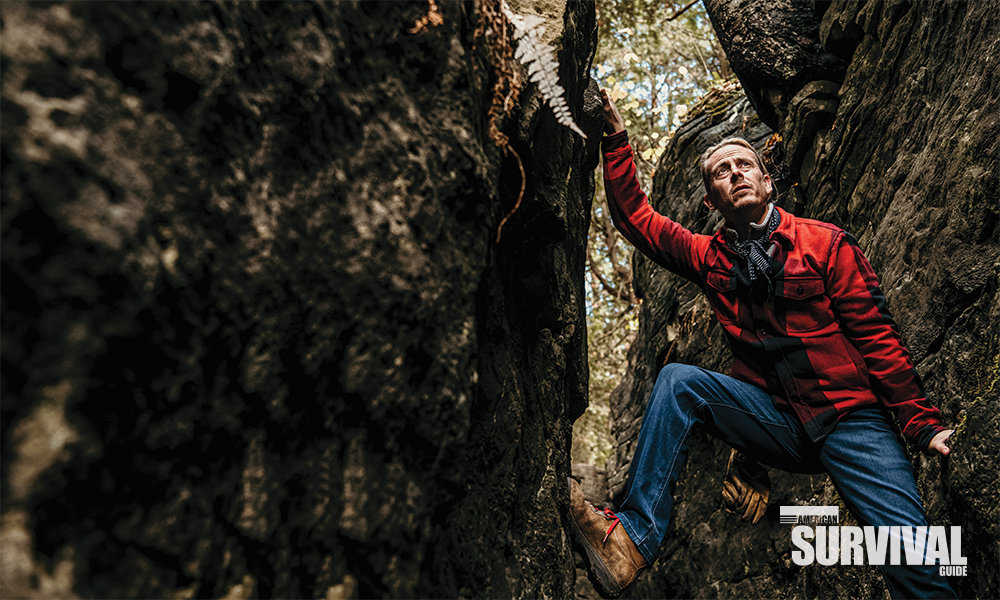ASG INTERVIEWS THE SURVIVAL EXPERT ABOUT HIS NEW TV SHOW.
The captivating, new television show, Could you Survive? with Creek Stewart, is an amalgamation of engaging reenactments and ready-to-use, instructional survival skills and techniques demonstrated by Stewart himself.
Each episode of this program, which airs on The Weather Channel, features two truly incredible survival stories. They’re narrated by the actual survivor(s) of the ordeal and also feature Stewart explaining where, how and why their situations could have improved with a little bit of survival skill knowledge.
The skills and techniques Stewart presents in the show are based on his decades of hands-on experience in the field, hundreds of hours of dedicated outdoor and nature-centric research and a good, old-fashioned Eagle Scout mindset.
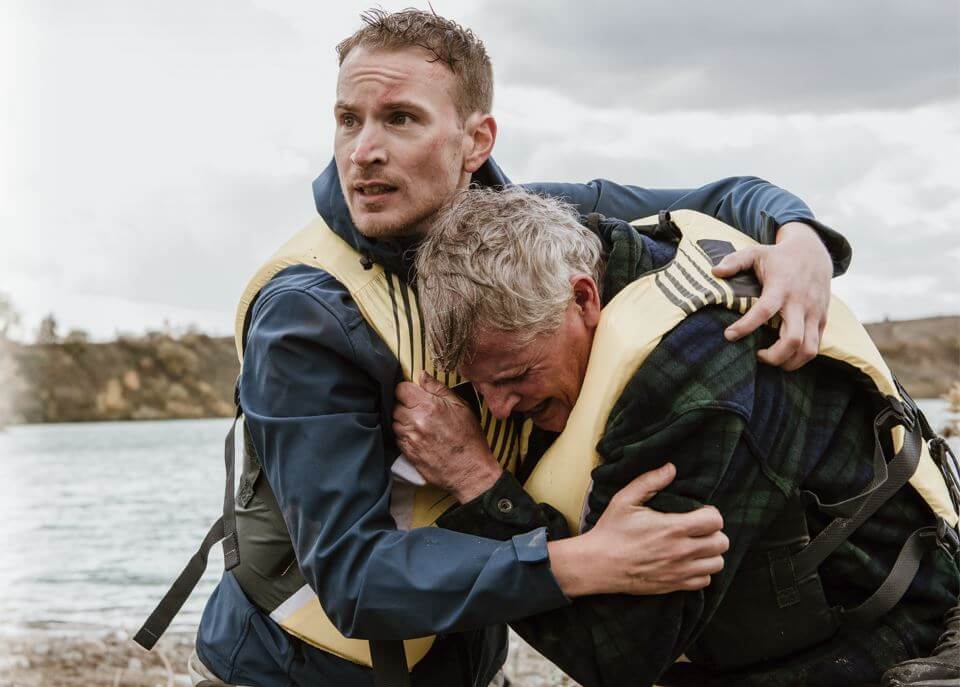
Although Stewart’s always active in the great outdoors, I was able to catch up with him and get the scoop about his childhood—which brought survival skills into his life—the challenges of safely filming amid the threat of COVID-19 and, most importantly, how his new show can help both ”regular Joes” and seasoned outdoorsmen, alike, survive whatever Mother Nature happens to throw their way.
American Survival Guide: This, I believe, is your third show for The Weather Channel. Is the entire “on-camera” experience much easier now for you than when you first started?
Creek Stewart: Yes, without a doubt. Being on camera is like all skills in life: It takes trial, error and practice to get good at it. You must remember that I was a survival instructor long before I was an on-camera host. Other than via a few YouTube videos, I had little on-camera experience, and it definitely showed. The editors of my first few seasons need a special trophy for helping to make me look even remotely coherent! But now, because I have almost a decade of experience, being on camera has become second nature.
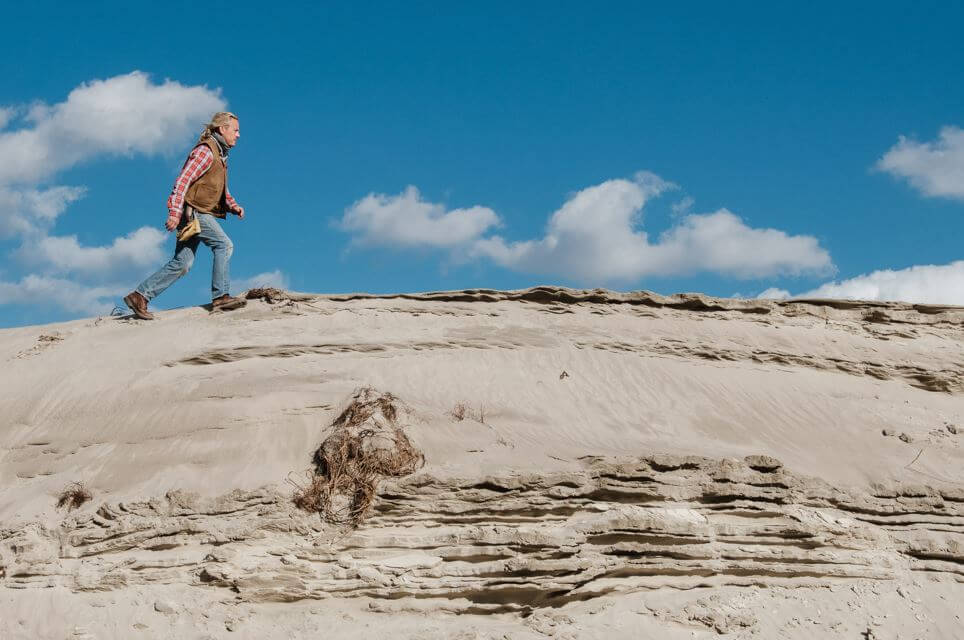 Creek Stewart makes his way across a barren landscape in one of his new show’s episodes. (Photo by The Weather Channel)
Creek Stewart makes his way across a barren landscape in one of his new show’s episodes. (Photo by The Weather Channel)
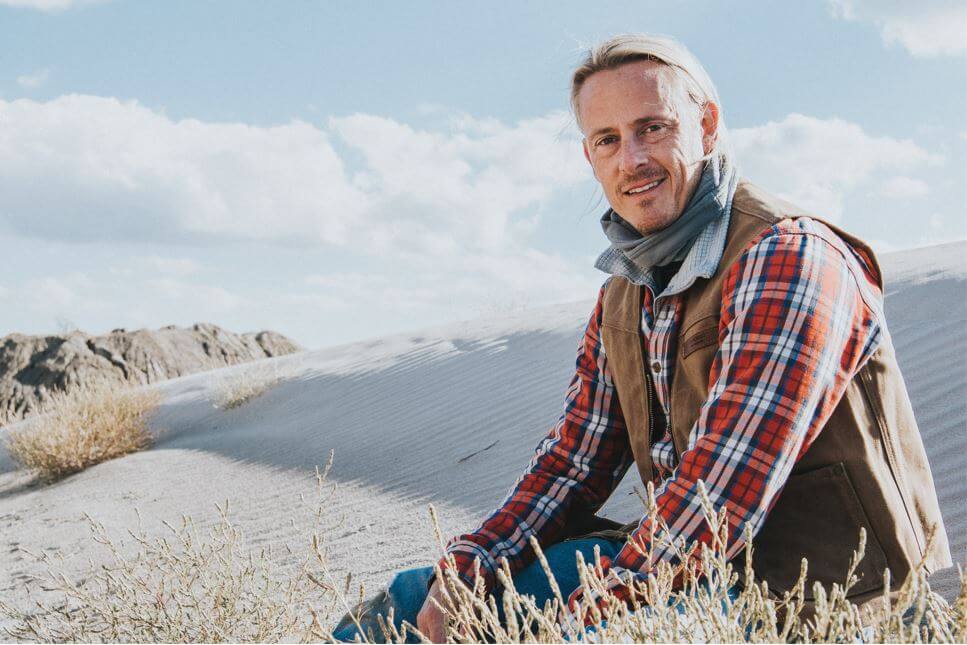
ASG: Filming in the unpredictable outdoors has its challenges. Did you face any of Mother Nature’s wrath during your filming? If so, how did it affect the overall production schedule?
CS: Just as for the stars of our survival stories, our biggest challenge when filming is often the weather. We film all these stories outside, in the elements, mostly during the winter months. I’ll never forget filming 12-hour days for almost two weeks straight in 8-degree (F) temperature in the snowy mountains of Utah; or during torrential downpours in the mountains of Puerto Rico.
When it comes to our production schedule, we’re entirely at the mercy of the weather. All our camera gear is weather-sensitive. I’ve seen multi-thousand-dollar cameras stop working because of the cold or getting wet; and when that happens, everything stops until it’s fixed. The weather is, and will always be, my number-one adversary in the woods and on TV.
ASG: Did the COVID-19 pandemic have any impact on filming your show?
CS: Absolutely. First, we were lucky to even have filmed during that time. All inside productions were canceled. We were only able to do this show because it was outside.
We started filming this series in late summer, and it was the first time many on the crew had even worked that year because of how COVID-19 affected the television industry. We filmed this entire season in the beautiful country of Canada.
As you might know, the Canadian border was closed during COVID-19—and still is as of this writing. My first challenge was getting across the border. I was given an exception, because the show helped the Canadian economy. But even upon crossing, I had to self-quarantine inside of a house in Canada for 14 days before I could begin filming. I couldn’t leave the house for any reason and had to give video testimony upon crossing that I understood the consequences of doing so was up to three years in prison. It was stressful for me. I also hated leaving my family during the uncertainty that surrounded COVID-19.
While filming, COVID-19 brought on an entirely new set of challenges. There were extremely strict rules for handling gear, eating, wearing masks and social distancing. I always wore a mask, except for while I was on camera. We were tested for symptoms of COVID-19 twice a day, and you were sent home if you had any. (I never did.) All of this made filming more difficult. It was a season of filming I’ll never forget and also one I hope I never have to repeat.
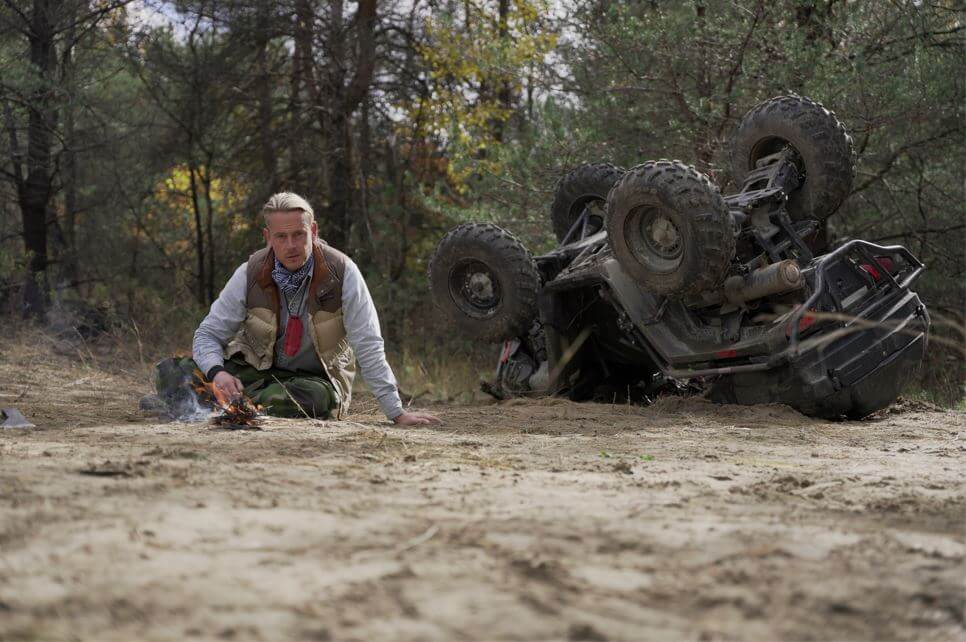
ASG: The survival situations presented on the show were highly diverse. How did you go about finding people who experienced such extreme, life-threatening emergencies?
CS: Between the production company, BGM, and The Weather Channel, there’s an entire research team that not only looks for potential stories, but also interviews show candidates. Because this is our fourth season of doing this type of show, I also receive many e-mails from people who’ve been through survival scenarios or know someone who has. Each season, we wonder if there’ll be enough stories for another show, but there always is! It’s amazing how many people have gone through real-life survival stories in the outdoors, and each one is unique and inspiring in its own way.

ASG: Upon viewing, the survivors showed genuine emotion while reliving their experiences, and yet, they faced their fear to help others who might encounter similar situations. After hearing about their experiences, would you agree that they’re incredibly strong mentally, physically and emotionally?
CS: Some of the people on this show are the most resilient humans I’ve ever met in my life. Many have overcome nearly impossible odds to be alive to talk about it. One common thread I see among almost all the survivors is that they genuinely want other people to learn from their situation and hope that, by sharing, they’ll make a difference and “pay it forward.” These survivors are incredible humans and inspire me each season beyond words!
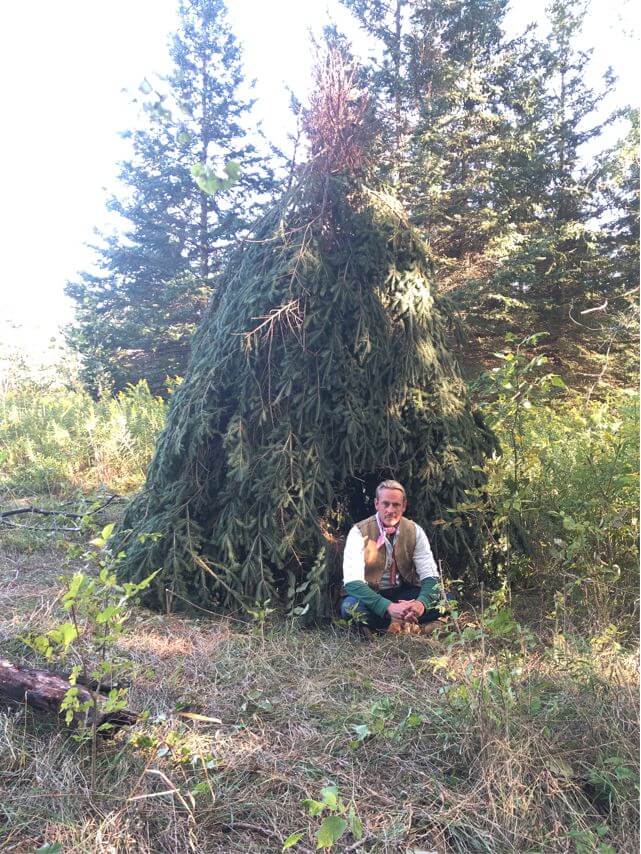
ASG: Was it in your hands as to which survival tips and tricks you’d present on the show, or was it a group effort with the entire production team?
CS: I’m always presented with the story first to see if there are skills that can be taught. After I brainstorm a list of possible survival skills, we work together as a team to determine which ones make the most sense for location, filming, time of year, etc. After filming nearly 30 stories and hundreds of skills, it’s amazing that I’m able to keep coming up with skills!
But each story always presents a new set of unique circumstances and resources to work with. Coming up with the skills is one of my favorite parts of this project.
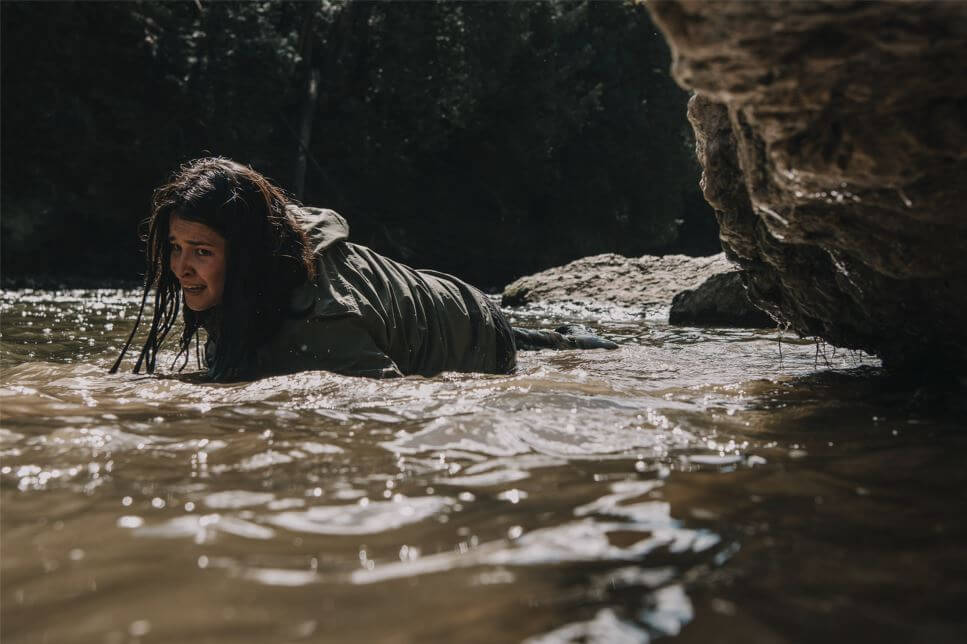
ASG: Do you feel that by watching this show, viewers will become more aware and prepared prior to venturing into the great outdoors?
CS: Yes. And that’s not just a hunch: I’ve received countless e-mails from people who’ve watched the show and who’ve been inspired to get outside—and feel more prepared to do so. But the most meaningful e-mails are from the handful of people who’ve been in a survival scenario and used knowledge they learned from the show to get through it. It’s these tales of survival that’ll ultimately be the legacy of this show.
“It’s amazing how many people have gone through real-life survival stories in the outdoors, and each one is unique and inspiring in its own way.”
ASG: What would you want the main takeaway to be for viewers of Could You Survive?
CS: Two things. First, always tell at least three people where you’re going and when to expect you back—even if it’s for a short hike or seemingly harmless excursion. And second, always be prepared for the unexpected with a pocket or backpack survival kit that contains tools to help you. These should include a signal for rescue, a fire starter, shelter from rain or snow, and a water filter and collector. These don’t have to be expensive, fancy, bulky or heavy, but any one of them can absolutely save your life.
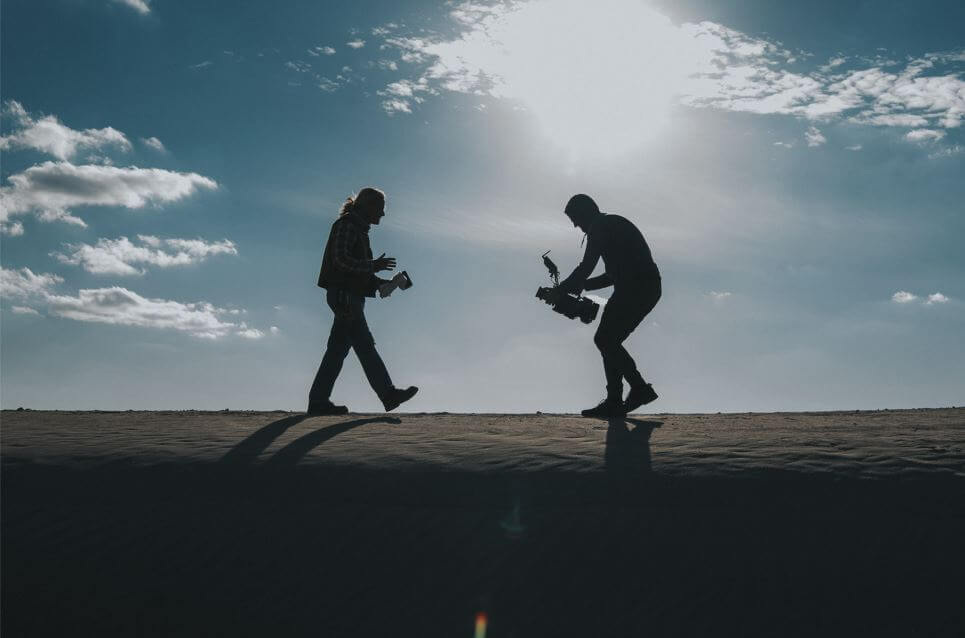
Inspirations, Early and Now
ASG: Choosing to teach survival skills isn’t the most popular choice as a career among young children. What led you on that path?
CS: Ironically, I went to college to be a pharmacist, until I shadowed one! Long story short, I grew up in the Boy Scouts and loved the outdoors. I’m an Eagle Scout. I wanted to do that stuff for a living, and the closest thing I could think of to achieve that goal was to teach survival skills.
I tried to make a living teaching survival skills for 15 years before I made any money at all. I worked at other full-time and part-time jobs to pay the bills while I pursued my “unprofitable” hobby on the side. But my hard work eventually paid off, and I finally figured out a way to turn my passion into a real full-time career; and I thank God every day for it.
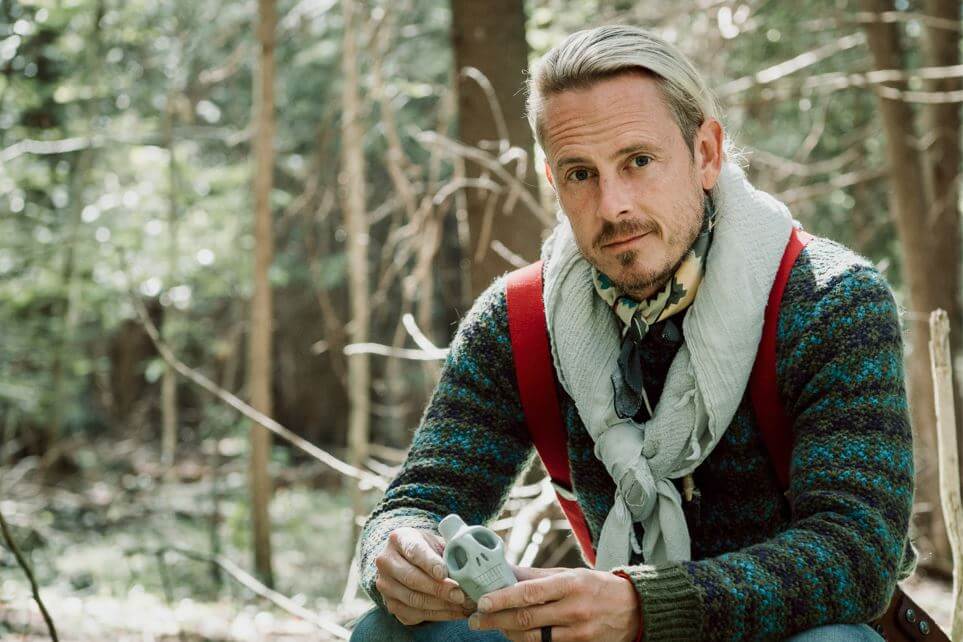
ASG: Who did you look up to in the “outdoor” world then, and who now?
CS: As I was growing up, my outdoor mentors were my grandfathers and my scout leaders. I wasn’t aware of any survival personalities or instructors at the time. The survival books I read were my Scout books, old Scouting field guides and my dad’s old Army Survival Guide. I scoured those books until the pages wore thin!
Today, I glean inspiration from many different people. The more I learn, the more I realize there are many more people out there who know more than I do. I’ve trained with the Paipai Indians in Mexico and basket-weavers in West Virginia—and everywhere in between. In recent years, I’ve been learning a ton from Primitive Technologist Doug Meyer in North Carolina. He studied under outdoor icon Steve Watts and is a wealth of knowledge.
I’ve tried my best to surround myself with people who’re not only skilled but who also have a passion for teaching and sharing. You can find many of these people teaching their skills online at the learning platform I own at https://www.OutdoorCore.com.
ASG: Is there any one survival skill practitioner beside whom you’d jump at the chance to work? And who would you want to be by your side if a true crisis hit home?
CS: Yes, but I can’t: It’s my grandfather, and he’s passed. While I learned a lot from him, I was too young at the time to really understand the wealth of outdoor knowledge he really had. If I could go back in time, I would have “interned” with him during summers.
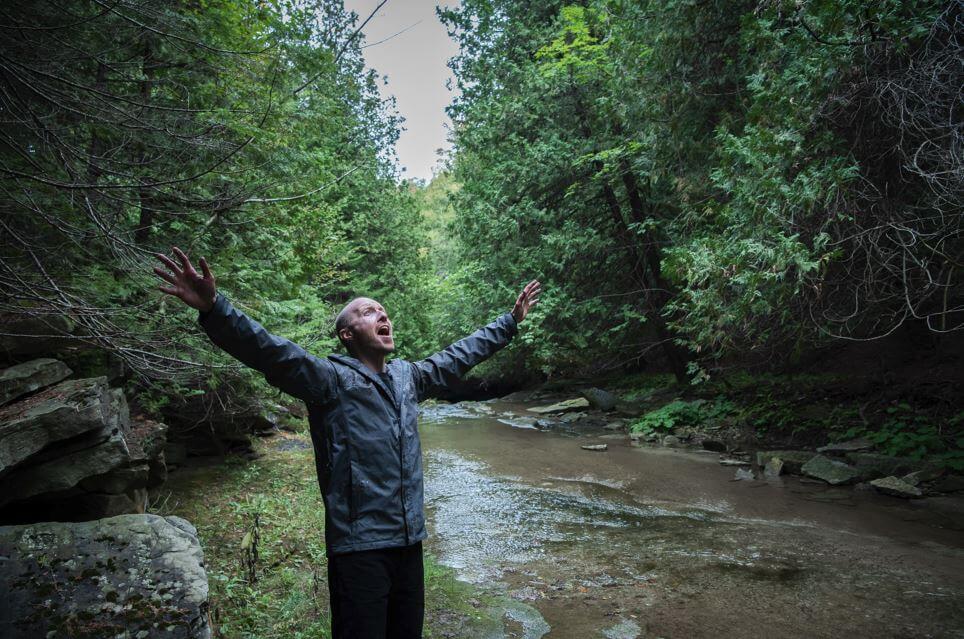
Creek Stewart, Off Screen
ASG: Is there a Mrs. Stewart? And, if so, does she share your love of the outdoors?
CS: Yes. Her name is Sarah, and she’s far more than I’ll ever deserve! Our marriage is a to-hell-and-back survival story and miracle for another day. She loves the outdoors, but not in the same way I do. But I like to think my influence is slowly rubbing off on her … .
ASG: What do you do in your free time—when you aren’t starting fires from scratch or trekking though Mother Nature’s backyard?
CS: Ironically, even as a survival guy, I spend a lot of time at my computer, because my business is online-driven. But, in my free time, you’ll either find me wrestling my little son, River, or playing with baby dolls with my little girl, Lakelyn. My other “hobby” is disaster preparedness, so you’ll often find me spending time organizing my long-term food storage or working in the garden beds outside. Since I’ve had my kids, “being prepared” has taken on a whole, new meaning, and I’m constantly trying to make sure my family will be safe if things go south.
ASG: Just as you now teach outdoor survival classes, had you taken some of these useful weekend courses when you were just starting out in the preparedness world?
“One of the greatest blessings in my life has been to pursue my outdoor passion as a full-time career. To me, there are few things more rewarding than helping someone else do the same.”
CS: If weekend classes existed when I started my business in the early 1990s, I wasn’t aware of them. I learned my skill sets the hard way—through good, old trial, error and thousands of hours of immersive practice in the woods. I’ve since been to many other weekend events hosted by other companies and people, both as a student and a guest instructor.
When I first started, the Internet wasn’t really “a thing” yet. I didn’t even know there was a “survival industry.” I can certainly tell you from experience that learning from other people is a whole lot faster and easier than trying to figure it all out by yourself. The Internet has “cursed” the world in many ways, but helping people connect others with similar interests and passions is certainly one of the positives.
ASG: How did Could you Survive? with Creek Stewart come about? Did the Weather Channel approach you, or did you have this fantastic idea and pursued it with the channel?
CS: While filming my first series with The Weather Channel, Fat Guys in the Woods, The Weather Channel went through a restructuring, and that show wasn’t renewed. Once the dust settled, the channel reached back out to me to see if I was interested in doing a different series. I was, and we worked together to develop the show concept that would become SOS: How To Survive, which has been rebranded this year to Could You Survive? with Creek Stewart. My name is in the title this season, so I guess I’ve finally made it!
ASG: Where does Creek Stewart go from here, now that production is complete and the show is airing? Any scoop on your next project and whether it’s television, books or survival skills-related?
CS: The television industry is about as unpredictable as the weather, so who knows what’ll happen in that department? As for my in-house projects, I’m spending more and more time helping other outdoor skills instructors build their own businesses. One of the greatest blessings in my life has been to pursue my outdoor passion as a full-time career. To me, there are few things more rewarding than helping someone else do the same. I’m currently doing this by teaching outdoor skills instructors how to build, launch and sell their own online outdoor teaching courses (at www.OutdoorCore.com).
I’m also helping them build the marketing side of their business (at www.SurvivalCEO.com). You can be the best instructor in the world, but without a solid marketing system in place, you’ll never reach your full potential. I figured all of that out the hard way and am also sharing how to do it with others. However, if 2021 doesn’t shape up fast, I might be spending all my free time building an underground bunker!
“ … each story always presents a new set of unique circumstances and resources to work with. Coming up with the skills is one of my favorite parts of this project.”
The Show
Could You Survive? with Creek Stewart entertains on two distinct levels. First, the reenactments are engaging and keep you hooked to the very end. Every minute watching the determined victims of Mother Nature’s wrath (or just bad luck) leaves you wondering how they’ll survive their seemingly hopeless scenario. Second, Stewart’s skills, presented throughout each episode, are well-thought-out and offer tips and tricks for the viewer if they ever find themselves in similar circumstances.
However, the best part of the show, at least for me, was thinking what I’d do if that were me out there, fighting for my life when things unexpectedly go bad, very bad. This type of thinking, if others follow suit, can only encourage people to prepare for the unexpected and perhaps on their next outing be better equipped, mentally and physically, for the perils that might come their way.
Are You Equipped for the Outdoors?
Pack these items for a fighting chance if or when you’re thrust into a survival scenario:
Rain poncho. Compact, inexpensive and extremely valuable during a downpour, a poncho can help prevent hypothermia by keeping you dry throughout your ordeal. Pack several for added protection in case of days of rain.
Lighter or matches. This one is a no-brainer. Fire can bring warmth, security and peace of mind to any situation. Forget the complicated means of making fire; just pocket a lighter or waterproof match (or both), and you’re good to go.
Knife or multi-tool. These universal tools are a necessity for a variety of applications. From cutting seat belts to shaving tinder, creating a spear and for whittling just about anything into a useful object, a knife and/or multi-tool should never be left behind.
Water filter. Either pack a filtering straw or a compact filtering bottle for purifying water found in streams, lakes or rivers. Remember: You have three to four days—at best—with no water before you die, which makes this item vitally important!
Reflective blanket. Keep yourself warm with this “Space Age” item. It keeps warmth in and reflects your body heat back to you, which is essential to prevent hypothermia when temperatures drop. Again, as with a poncho, pack two or three for added protection.
Energy bars or other snacks. Hunger can cause you to make poor decisions and put you in an overall bad mood. Packing calorie-filled energy bars can help keep you going between meals. Trail mixes and beef jerky make great additions too.
Signaling device. If you’re lost, you’ll need to alert others to your location. A signal whistle, reflective mirror or brightly colored handkerchief can all aid you when rescuers are nearby. Best of all, they’re small enough to fit into your pockets or hang from your jacket’s zipper pulls.
All-in-one kit. Most people don’t carry a bug-out bag everywhere they go, but there are small packs that house many of the abovementioned survival items. Just attach one to your belt or hang it from your shoulder, and you’re good to go. Remember, though, to always inspect the kit for missing capabilities. In addition, consider adding some of your own smaller gear.
Editor’s note: A version of this article first appeared in the June, 2021 print issue of American Survival Guide.


